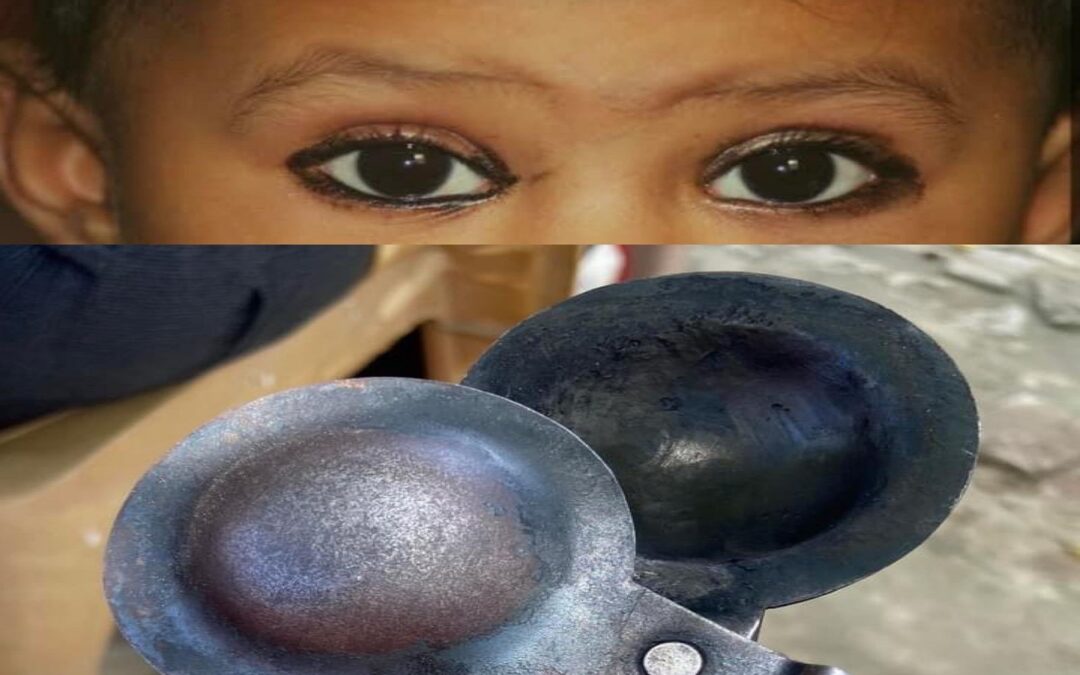By Dr. Shahwar Kazmi, Physician working for Global Health, at the World Health Organization
The application of “Kajal” of Kohl on the eyes, especially those of children, is a highly prevalent tradition in the Indian subcontinent. People think that Kajal cleans the eyes, cools it, prevents infection and thus improves vision. It is also believed to protect a child from the “evil eye”.
Kajal is mostly prepared from “Kohl Stone” (Galena). It is also prepared at home using carbon soot from the flame of oil lamp. Chemically, Kajal contains different compounds of lead (PbS, Pb3O4), magnetite (Fe3O4), carbon, and zincite (ZnO). Long term application in the eyes may lead to accumulation of lead in the body to a toxic level, and could possibly lead to brain and bone marrow damage, which can result in convulsions, anaemia and eye damage.
Indian Ophthalmological Society and other global health regulators such as the US FDA do not permit the use of Kajal in the eyes or as cosmetics by women. In fact, Kajal or kohl, is a favourite cosmetic with Indian women. Many of them wear it not only to office but also on special occasions.
It is therefore prudent that healthcare workers should educate parents and their families of the harmful effects of Kajal when they spot it on kids.
- How do you avoid environmental pollution? - July 19, 2023
- Learn how to grow a mango tree from seeds - June 29, 2023
- Commercial Electric Vehicles platform Turno raises $13.8M as it scales across India and builds proprietary battery technology - February 9, 2023
- HelpAge India rolls out ‘Project Surakshit’ to train 50,000 elders in Digital Safety - February 8, 2023
- A trip of faith and sustainability: An enriching escape to Dongaon, Maharashtra, India - January 9, 2023
- A Sustainable Kidswear Wardrobe for the Little Ones - July 25, 2022
- 10 Sustainable and Ecofriendly Apparel Brands from India That Are Blazing the Trail - July 23, 2022
- Kajal can harm your baby’s eyes? - July 20, 2022
- Greenubuntu organizes plantation drive in Paras Hospital, Patna - July 11, 2022
- Only electric cars to be sold in India by 2030: Go Green - February 28, 2022

